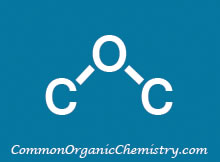Nitrile to Amine
![]()
Common Conditions:
LiAlH4
Lithium Aluminum Hydride (LiAlH4) is a powerful hydride donor that reacts rapidly with nitriles to produce amines.[1]
![]()
BH3-THF
Borane-tetrahydrofuran (BH3-THF) reduction of nitriles is typically performed in THF with heating. Decomposition of BH3-THF can generate H2 and tributyl borate. It is recommended that BH3-THF is used below 35 C (for safety). BH3-SMe2 is a more stable alternative.[2][3][4]
![]()
BH3-SMe2
Borane-dimethylsulfide (BH3-SMe2) reduction of nitriles is typically performed in THF with heating. BH3-SMe2 is more stable than BH3-THF and is available in much higher concentrations (10 M). One drawback of BH3-SMe2 is its unpleasant odor.[2][3]
![]()
H2 + Raney Nickel
Catalytic hydrogenation of nitriles can form secondary and tertiary amine by-pdts. Often NH3 (or NH4OH) is added to help minimize these by-pdts.[5]
![]()
H2 + Pd/C
Catalytic hydrogenation of nitriles can form secondary and tertiary amine by-pdts. Often NH3 (or NH4OH) is added to help minimize these by-pdts.[5]
![]()
Reaction Map:
The reaction map is intended to provide insight into possible reactions one step before and after the title reaction. It also serves as an alternative way to navigate the website, and as a means of coming up with retrosynthetic ideas. Click on the reaction arrow to visit the page.
 |
||||
 |
||||
 |
||||
 |
 |
 |
||
 |
 |
|||
 |
 |
|||
 |
||||
 |
References:
1) Carey, F. A.; Sundberg, R. J.; Advanced Organic Chemistry, Part B: Reactions and Synthesis, 5th Edition
2) Caron, S.; Practical Synthetic Organic Chemistry
3) Burke, S. D.; Danheiser, R. L.; Handbook of Reagents for Organic Synthesis, Oxidizing and Reducing Agents
4) Anderson, N. G.; Practical Process Research and Development, a Guide for Organic Chemists, 2nd Edition
5) Smith, M. B.; March's Advanced Organic Chemistry, 7th Edition
